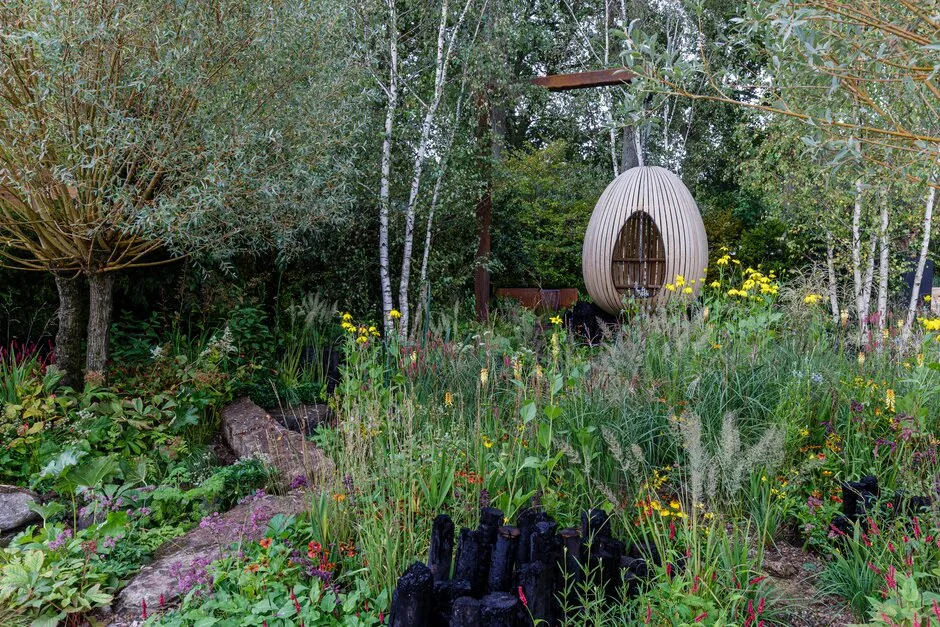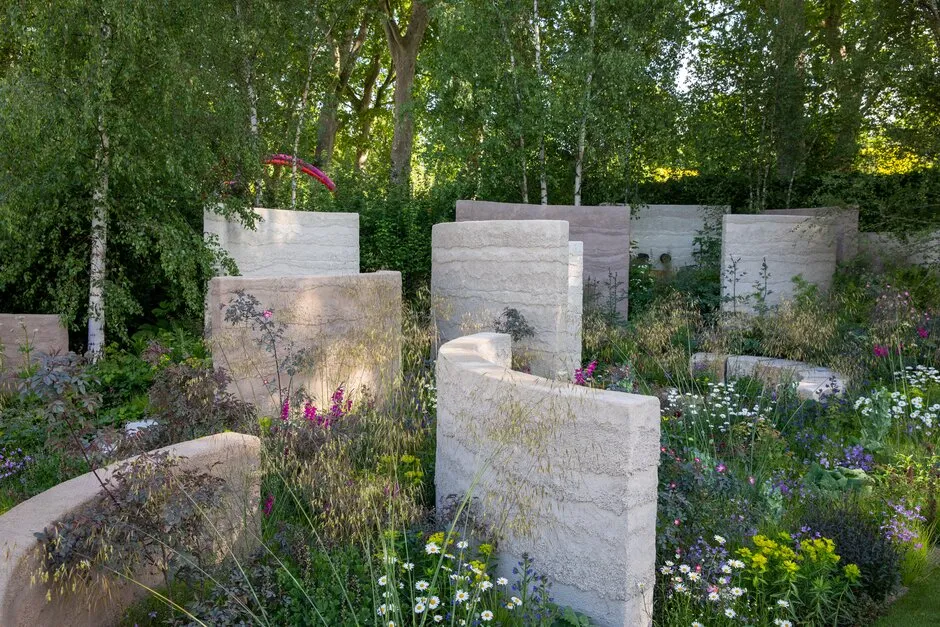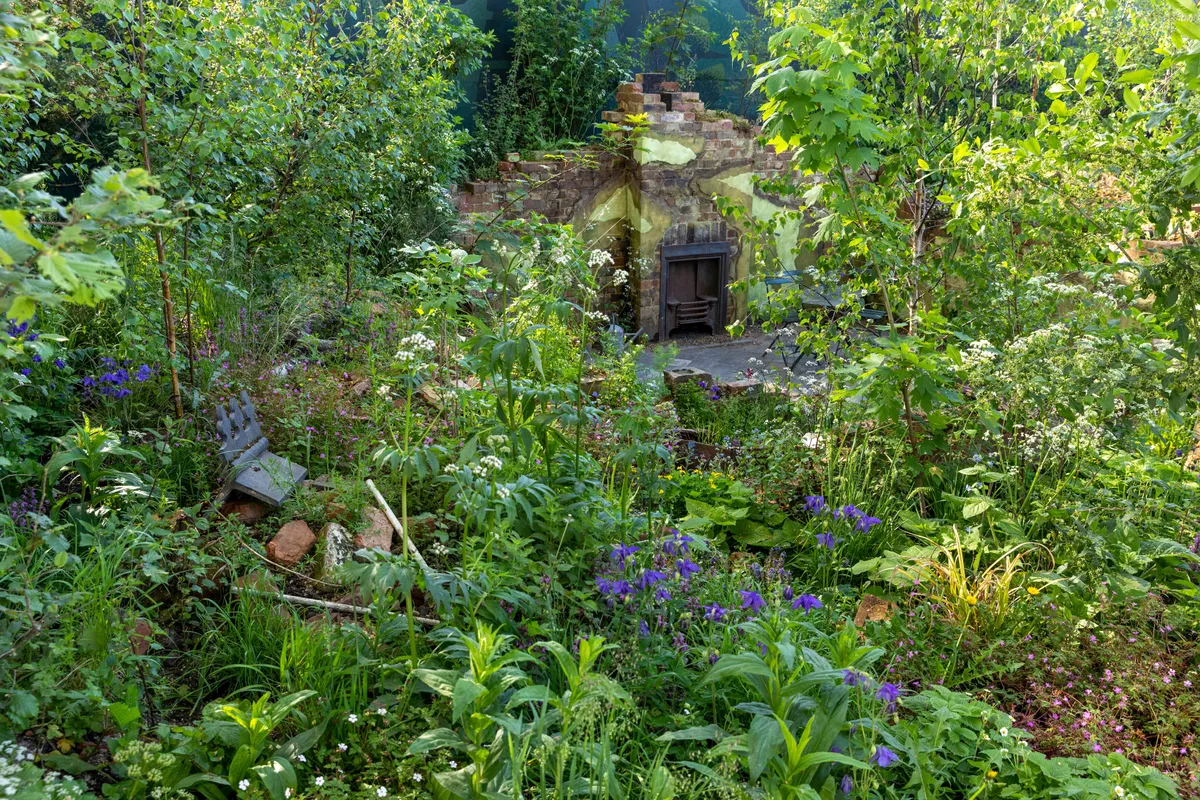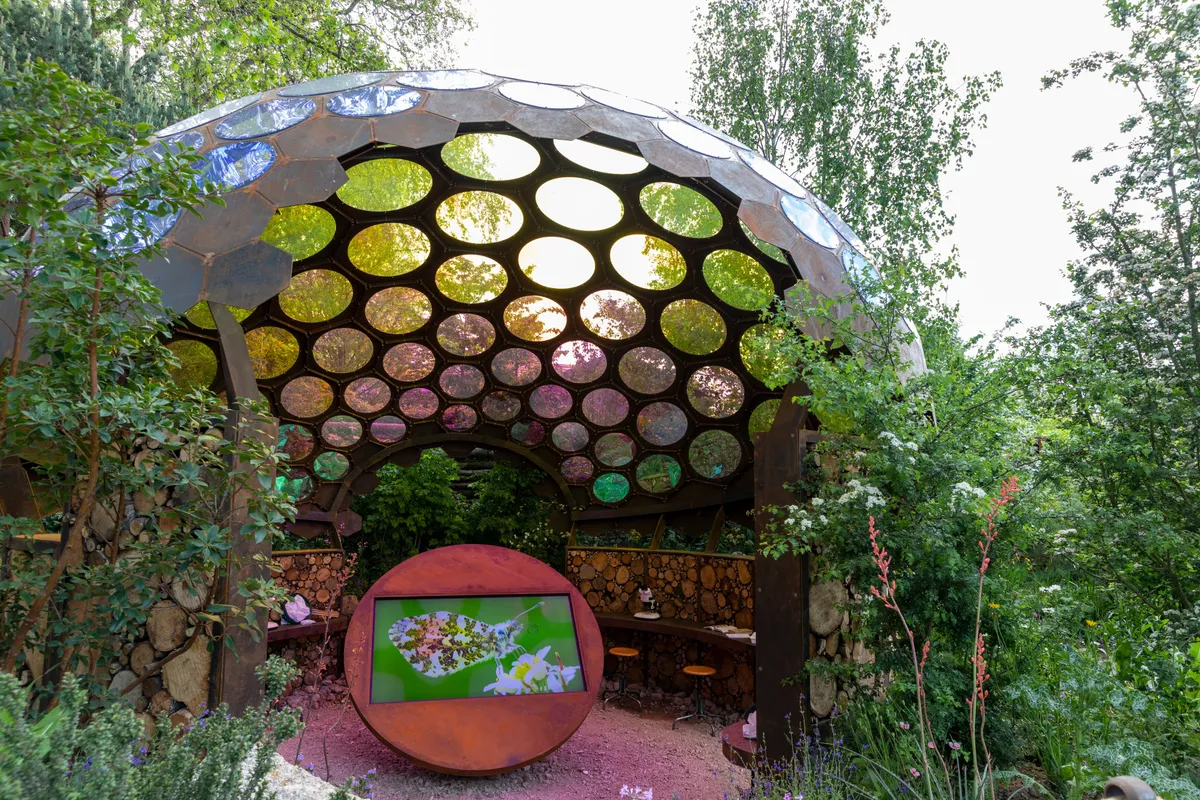The RHS Chelsea Flower Show is a yearly delight, and perhaps those sensational show gardens have inspired you to create your own design for next year’s show - or maybe you just think you could do it better. Either way, here’s our guide with everything you could possibly want to know about applying for and building a Chelsea show garden, with advice from the RHS and those designers who have been there, done that, and won the medals. We’re warning you, it’s a long read – but worth it.
More on Chelsea Flower Show
- Chelsea Flower Show 2025: tickets, information, dates and what’s on
- Our Chelsea Flower Show hub
- Sign up to our Chelsea newsletter
How do you get a garden at Chelsea Flower Show
In brief
How do you get to design a garden for Chelsea Flower Show?
You don’t need to be invited to apply to create a garden at Chelsea, as it is open to everyone, but it is best you have some professional garden or design experience or are studying in this field. Here’s more:
How do you apply to create a Chelsea Flower Show garden?
You’ll find the application form on the RHS website, as a starter, but you will also have to provide lots of documents and drawings to support this. Find out everything you’ll need: How to apply

What is the size of a Chelsea Flower Show garden?
Large Show Gardens are over 150sqm and small Show Gardens are 149 sqm and under. There’s a lot more to the design than dimensions though.
How much does it cost to build a Chelsea Flower Show garden?
You probably can’t afford it. Chelsea show gardens have been known to cost everything from tens of thousands to hundreds of thousands of pounds, so you’re going to need a sponsor.
We’ve top tips on finding the money to create your show garden: How much does it cost to build a Chelsea show garden
How long does it take to build a garden at the Chelsea Flower Show?
Main Show Garden designers have three weeks to build their gardens – Sanctuary and All About Plants categories get less time. All work has to be completed by 9pm on the Saturday before the show opens. For more ins and outs on the build and planting: Creating your show garden
How do the medals work at Chelsea Flower Show?
There are four levels of medal you can achieve at the Chelsea Flower Show: Gold, Silver-Gilt, Silver and Bronze. The best of the Gold medallists, in the judges’ eyes, is given the Best Show Garden award, and the public vote throughout show week for their favourite garden for the BBC People’s Choice award. There are ways to ensure you get the top medal: How to impress the Chelsea judges

Here's everything you need to know about designing a garden at Chelsea Flower Show
Where to start
This year’s RHS Chelsea Flower Show will take place from Tuesday 20 to Saturday 24 May 2025, and you have missed the show garden application deadline. But as double Chelsea Gold medal winner Joe Perkins explains in our video above, you really will need a year to get your design and application together anyway, so it’s the perfect time to start work on your 2026 or even 2027 application. Applications for 2026 are now open.
There are several categories of show garden, including the large Main Avenue Show Gardens that grab all the eyes, footfall and media coverage; but if this is your first ever show garden, you are better off going for one of the smaller categories first, such as a Balcony or Container Garden, an All About Plants Garden or a Sanctuary Garden.
In fact, it might be best to try out one of the smaller shows first before attempting Chelsea, such as Malvern, Tatton or Hampton Court Palace Garden Festival. Creating a smaller garden at a smaller show will give you the practical, personal, hard-won learnings you need to be able to create a realistic design for Chelsea, and the RHS prefers you and your contractor to both have previous experience of show garden design and build before attempting to do something for the Big One.
Before starting your application, the RHS will also expect you to have read all the bumph they provide to prospective designers, so you will need to become familiar with the General Show Regulations, the Judging Criteria and documents on Environmental Responsibility and Sustainability. The RHS also provides an Example Design Proposal to pore over.
Your design concept
Now for the fun bit – your concept, and what the garden will look like. “I think you need to have a really good idea up your sleeve,” says multi-Chelsea Gold medallist Cleve West. “You have to have something that’s going to capture people’s attention as soon as they walk past it. There will have to be one memorable thing from that garden.”
Hattie Ghaui, CEO of Project Giving Back, which funded 15 show gardens this year, says the best designs “are usually the most simple, without overthinking the symbolism or trying to shoehorn in every message you want the garden to convey. A beautiful planting palette is often what attracts the most attention - and this is especially achievable in the smaller garden categories at Chelsea”.

How to apply
But as well as having a good design, you are going to need to be good at admin, because your design proposal document needs to include everything on this rather scary RHS list: a master plan, to scale and annotated with key elements of the design; a setting-out plan showing the main elements of the garden and key dimensions such as path widths, spot heights, water dimensions; perspective drawings showing key views of the garden including the views into the garden that visitors will see; and section elevations showing excavation depths and key heights, including the RHS regulated depths and heights.
Not turned off yet? Well, as well as this, you will have to prepare a preliminary planting plan with key structural plants, and a separate list of other plants (which doesn’t have to be your final definitive list but should be a good indication of plants you wish to use). Then you’ll also need construction drawings for any buildings, walls and load-bearing construction details (structural engineering drawings will be requested if your application is accepted); a signed letter from the sponsor confirming full funding of the garden, or if self-funded confirmation of how funding will be achieved (see below for more); examples of your previous show garden and design experience; examples of your contractor's previous show garden experience; and, finally, your first version of the Client’s Brief, which forms the basis upon which your garden is judged.
Lastly, it is essential that you have a new home for your garden to go to after the show, either in its entirety or in parts.
Still with me? Completed applications go to a selection panel, who may get in touch to ask you to present your proposal via phone, before coming back with an acceptance or feedback on why you have not succeeded.
Okay, well done if you made it this far - that’s the admin side all done with. Now we get all the juicy tips from those in the know, below.
Watch: Chelsea Flower Show designers explain what you need to know
Show me the money
You’re not going to get anywhere at Chelsea without A LOT of money. We couldn’t get exact figures out of anyone, but Main Avenue show gardens have been known to cost from tens of thousands to a few hundred thousand pounds. Before you think about remortgaging (which we wouldn’t advise), the way these gardens get paid for is via sponsorship.
“Getting a sponsor is harder than getting a gold medal sometimes,” admits Chelsea veteran Andy Sturgeon. “Corporate marketing decisions are usually made by one individual at an organisation with a passion for gardening and Chelsea. These people are hard to find, but don’t be afraid to ask your garden design clients or anyone you know.”
In previous years, garden sponsorship often came from financial institutions and large commercial brands, but in the wake of Covid, the funding gap has been filled by Project Giving Back, which offers sponsorship to show gardens for charity. It is not yet known if PGB will be funding any show gardens for the 2025 show, but CEO Hattie Ghaui has some solid advice for those seeking a sponsor.
“Think about how your garden design idea could be leveraged for a good cause and then approach the organisation about a joint funding bid. In our experience of selecting gardens for good causes for PGB funding, the best partnerships come from a place of connection and mutual understanding - designers who are passionate about the cause they are partnering with, perhaps with first-hand experience of their services, or an existing relationship, deliver truly stunning designs on their behalf.”
It’s really important to demonstrate the benefit of the investment a sponsor will make, she says. “What’s in it for the charity, what’s in it for them as a sponsor? If you’re approaching individual philanthropists, do you know what they’ve funded in the past, where do their interests lie? If it’s a corporate organisation, do you know what their strategic objectives are around environmental and social issues, and how can having a garden for a good cause at Chelsea contribute to this? Understand what drives your prospective sponsor and tailor your funding proposal to answer that need.”

Creating your show garden
So, you’ve got your design accepted and have sponsorship, a contractor and a nursery growing your plants. Is there anything else you should know before the show?
“Mock up whenever you can,” says Chelsea Gold and BBC People’s Choice Award winner Tom Massey. “I’ve learned from experience that the more you can mock up and the more you can know before you get to site, the better. The less you’re trying to do things on site and guessing the better. But obviously there’s not the budget to mock up a full garden before the show, so there is always going to be some degree of experimentation on site.”
When it comes to the planting, the RHS advises you don’t overstuff your borders, or plant too sparsely; to avoid including plants that will get too large for their allotted space; and, most importantly, only bring visibly healthy plants to the show and ensure you are familiar with what plants are allowed on site. Don’t ‘flower arrange’ with plants – your scheme needs to be horticulturally correct as well as conveying a message.
“The RHS is adamant about this: the planting schemes have to be realistic,” says Tom Massey. “If you say something is good for biodiversity, it does actually have to be good for biodiversity. You can’t just be saying it – or you can, but it won’t score well with the judges. The judging panels have real horticultural experts so they will really interrogate that scheme and really look at it in detail.”

The weather can play havoc with Chelsea plants in the run-up to the show, so be prepared to swap in alternatives and have enough budget and/or lots of other types of plants as a contingency. “Make sure you work with a reliable nursery who are used to growing for Chelsea,” says Andy Sturgeon, “and keep visiting the nursery to check on progress even after you have started construction on site. You need to avoid any nasty surprises and unexpected plant failures and make sure you have a back-up plan and plants.”
Once at the showground for build-up, says Cleve West, try to get planting as soon as you can. “Start as early as possible with the planting on site at the show – the plants need a bit of time to all face the same way and relax into their situation. So if you can finish the planting by the weekend before the show, happy days.”
Cleve feels that the most important thing for success is to work with great people and treat them well. “You have to realise it’s a team event – there’s no way you can build a garden at Chelsea without a massive team behind you, at least 50 people, so just be respectful and work with people and don’t let the ego get in the way. And if you do that and you thank people, people give blood for you basically, they work all hours. You work from 7am to 8pm in the evening every single day of the show and it’s really hard work. You have to be appreciative and respectful of everyone involved. That’s the main thing.”
Impressing the judges
Around four weeks before the show, you resubmit your Client’s Brief to ensure it reflects any changes you have made to your design – this is what the judges see, not your application or drawings, so it is really important to get it right to maximise your chances of a top medal.
The RHS advises to keep it simple, with one clear and strong message.
“The written brief is very limited,” says Tom Massey. “You’ve got 20-50 words per answer. So trying to convey quite a complex theme and message in a very shorthand form is difficult. Gardens that have a landscape feel have started to do quite well at the show and well received by judging panels which I think is a good sign – they’re not looking for that perfection that Chelsea was associated with 10 or 15 years ago.”
In the end, once you have built the garden and the judges have visited, there’s not much you can do. “In a way, you’ve just got to put the judging out of your mind,” says Tom, “and remember that this is for a very important cause and an important theme, and it needs to be true to that. If it does well in the medals, that’s good, but for the sponsor and the message, it really needs to tick those boxes first and foremost.”
If you are interested in creating a show garden at Chelsea or another show, there is lots more information, guides and the application form available from the RHS.




